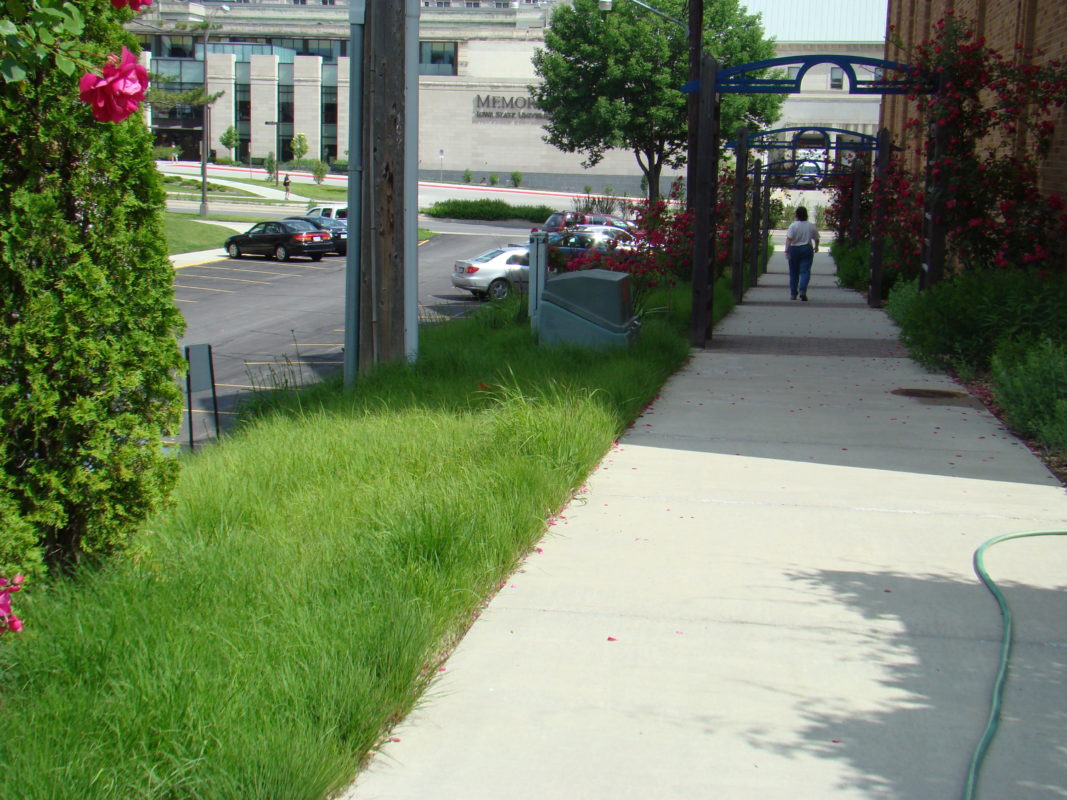Native turf offers an alternative to traditional lawns, featuring a blend of low-growing native warm-season grasses that provide a lawn-like appearance while offering environmental benefits. Unlike conventional cool-season bluegrass, native turf may green up later in spring but thrives during the hot summer months when traditional lawns often turn brown.
Native turf options
Two popular native turf blends offer different advantages. Both options develop deeper, more fibrous root systems than conventional lawns, improving soil structure and water infiltration. This enhanced soil condition allows rainfall to soak in rather than run off, reducing erosion and helping recharge groundwater.
Taller three-grass blend
30% Blue Grama, 30% Sideoats Grama, 40% Buffalo Grass
- More diverse appearance with varied textures
- Greater drought tolerance and habitat value
- Grows taller (up to 18 inches) if left unmowed
- Better for areas where occasional mowing is acceptable
Shorter two-grass blend
50% Blue Grama, 50% Buffalo Grass
- More uniform, traditional lawn-like appearance
- Stays naturally shorter, requiring less frequent mowing
- Excellent for areas where a neater appearance is desired
- Still provides improved water infiltration compared to conventional turf

Establishment and care
While native turf requires some patience during establishment, it offers long-term benefits with minimal maintenance:
- Prepare the seedbed properly with minimal compaction
- Plant in late spring or early summer with appropriate erosion control
- Test soil before planting to determine fertilizer needs
- Broadcast seed at 1-2 pounds per 1,000 square feet and ensure good seed-to-soil contact
- Water consistently during establishment to keep soil moist but not saturated
- Mow occasionally to control weeds during the first year without cutting too short
- Limit irrigation after establishment to discourage weeds
- Control crabgrass with pre-emergence herbicides if needed
- Avoid using herbicides during the first year or when temperatures exceed 80 degrees
After establishment, native turf requires significantly less water, fertilizer, and mowing than conventional lawns, saving time and resources while contributing to a healthier watershed.


